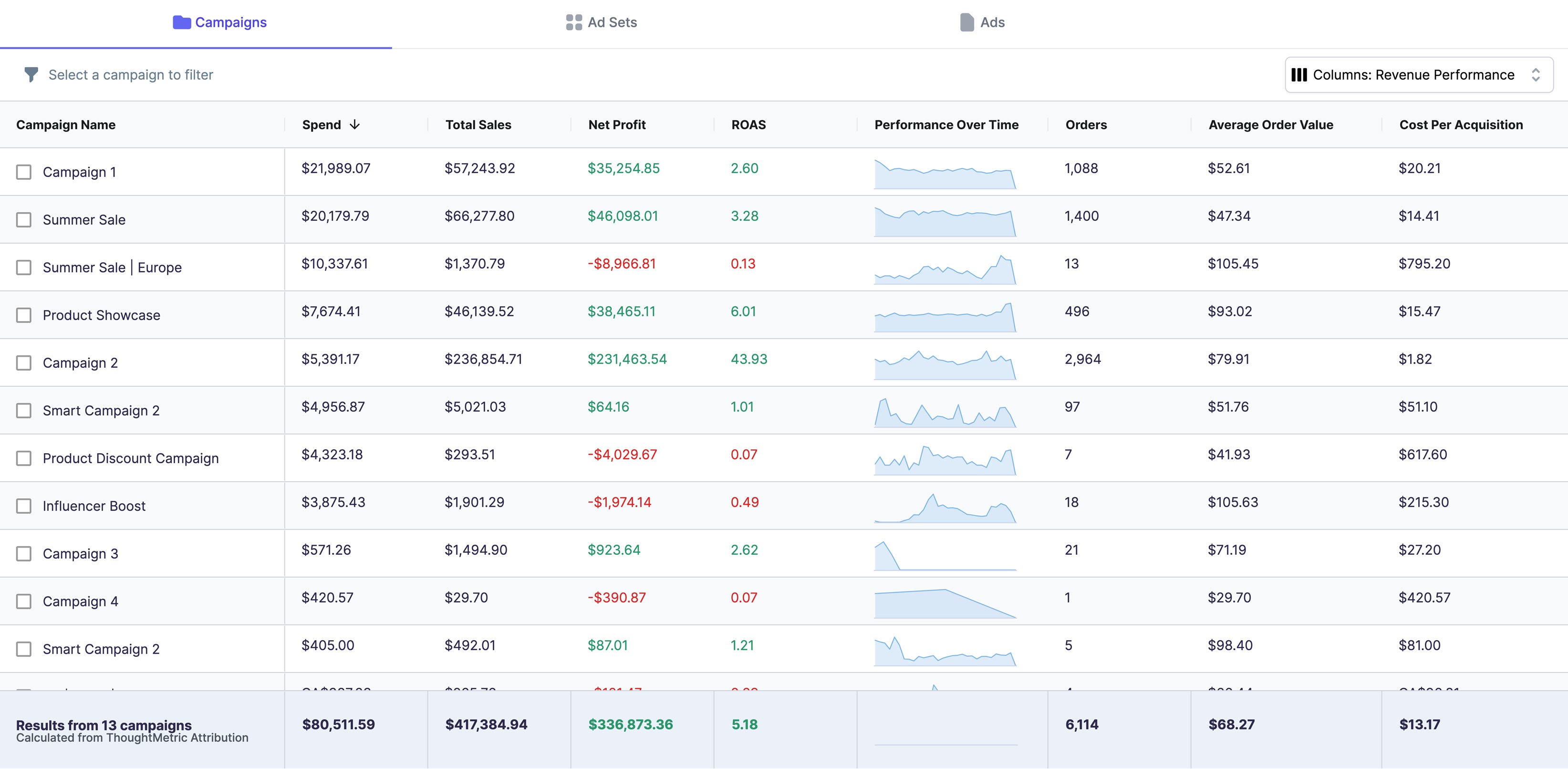First, the customer clicks an ad for a pair of shoes on Meta. A few days later, they purchased that same pair after seeing another ad on Google. Which campaign should get the credit?
ThoughtMetric’s answer? BOTH!
In today’s messy customer journeys, it’s not always the last click that seals the deal. Most people don’t just click one ad and buy. Instead, they usually see and interact with multiple ads across different platforms. Multi-touch attribution helps you give credit where it’s truly due and adjust your advertising spend accordingly.
ThoughtMetric’s Data-Driven Multi-Touch Model
This is our go-to attribution model. It’s multi-touch, which means it splits credit across all the marketing channels that helped make a sale. Instead of giving one ad all the credit, it looks at the full journey and shares the credit based on what actually happened. It pulls insights from both the ThoughtMetric tracking pixel and your post-purchase "How did you hear about us?" surveys to get the full picture. It’s the default model in ThoughtMetric and the one we recommend for most brands.
Below is an example of how ThoughtMetric breaks down a multi-touch order:
Why We Don’t Trust Meta and Google Dashboards
For example, imagine a customer clicks a Meta ad on Monday, then a Google ad on Wednesday, and finally makes a $100 purchase on Friday. Meta will report $100 in revenue, claiming full credit for the sale. Google Ads will do the same. Now you’ve got both platforms reporting a total of $200 in revenue, even though there was only one purchase.
Track Smarter. Spend Better.
At the end of the day, attribution should reflect how people actually shop. ThoughtMetric’s multi-touch model gives you a clear, honest view of what’s working, so you can stop over-crediting platforms and start making smarter decisions with your ad spend. If you’re ready to see the full picture, try it out with our 14-day free trial.





